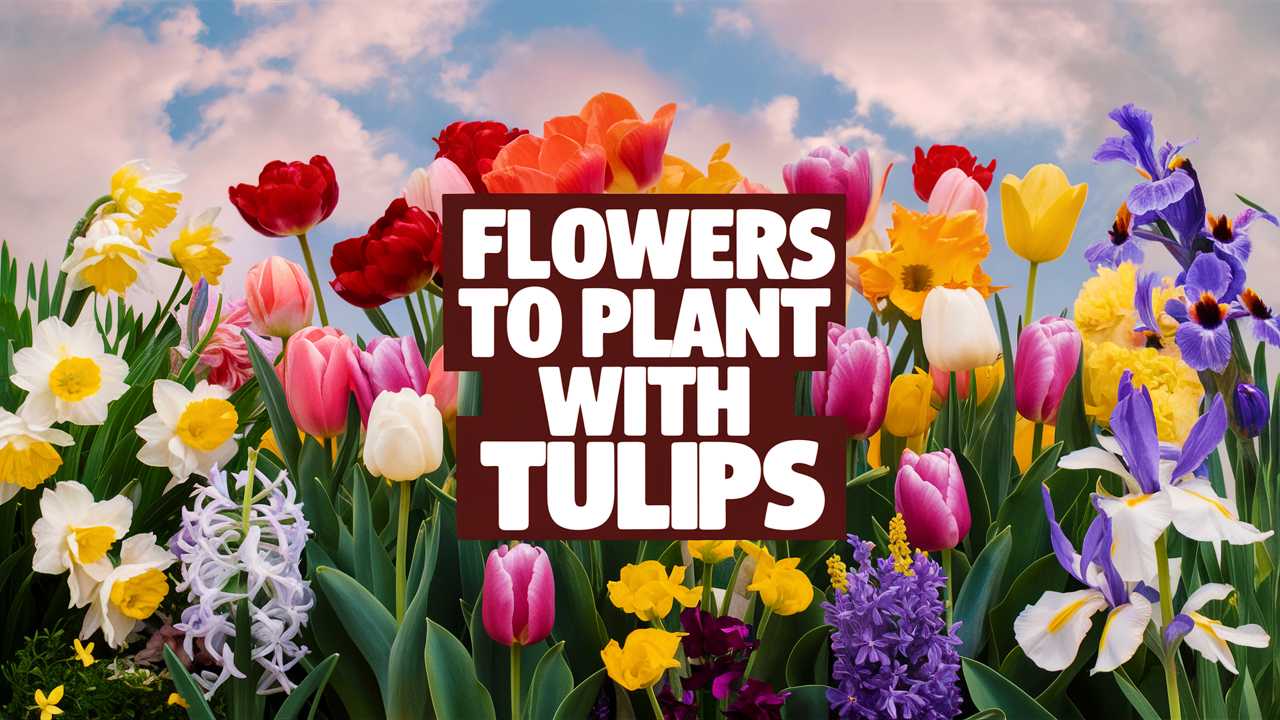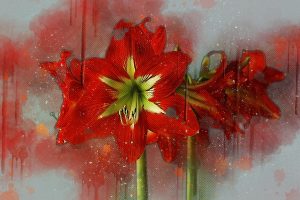Below, we will explore a variety of flowering plants that harmonize beautifully with tulips, each bringing its unique charm to the garden.
Crocus
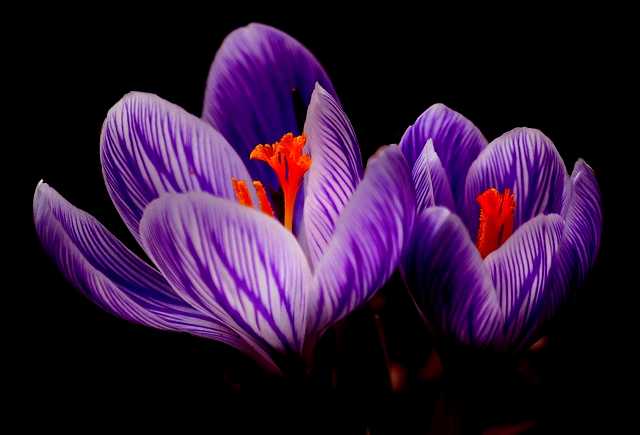
One of the earliest bloomers of spring, crocuses are small, vibrant flowers that set the stage for the tulip’s arrival. These hardy bulbs emerge from the ground as the last remnants of winter fade, often poking through the snow. Planting crocus with tulips allows gardeners to enjoy a colorful display as crocuses bloom just weeks before the tulips. The subtle, cup-shaped flowers of crocus come in various shades, including purple, yellow, and white, providing a delightful contrast to the taller, more flamboyant tulip varieties.
Moreover, crocuses thrive in similar growing conditions as tulips, preferring well-drained soil and full sun to partial shade. Their low-growing nature ensures that they won’t outcompete tulips for sunlight, making them the perfect companions for these elegant blooms.
Grape Hyacinth
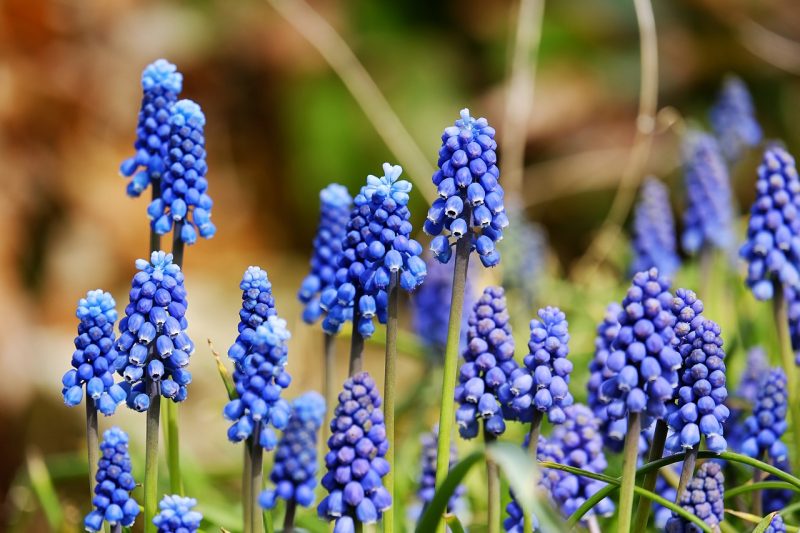
Grape hyacinths (Muscari) are another charming partner for tulips. These petite bulbs produce clusters of tiny, bell-shaped flowers that resemble miniature grapes, hence their name. Their rich blue or purple hues provide a stunning backdrop to the vibrant colors of tulips, creating a visually appealing contrast in the garden.
Planting grape hyacinths in clumps alongside tulips can create a whimsical and colorful swath of blooms. Their low growth habit ensures that they don’t overshadow the taller tulips, while also attracting beneficial pollinators like bees and butterflies to the garden. Additionally, grape hyacinths thrive in similar soil conditions as tulips, making them a practical choice for companion planting.
Daffodil
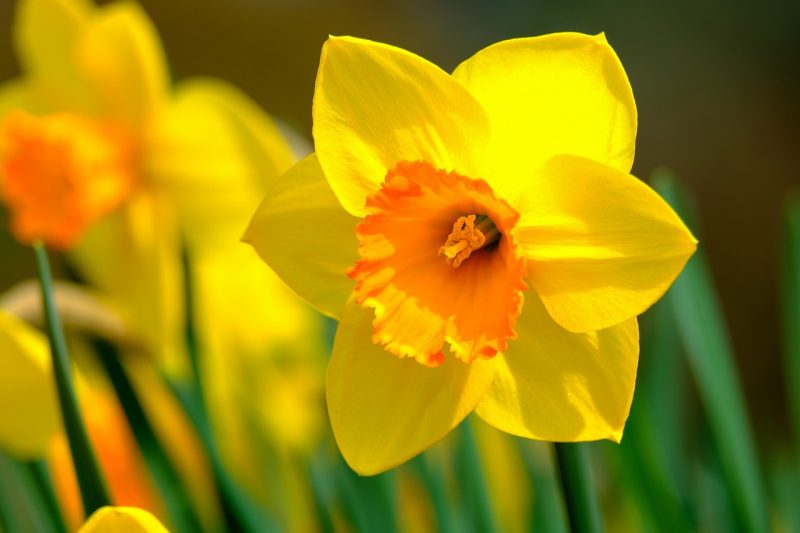
Daffodils are iconic spring flowers, easily recognized by their trumpet-like shape and sunny yellow color. These hardy bulbs bloom at the same time as tulips, offering an eye-catching mix of colors and forms. Planting daffodils among tulips creates a lively and cheerful garden display, as their striking yellow complements nearly every tulip color.
Daffodils are also known for being deer-resistant, which is a considerable advantage if your garden is prone to wildlife. Their robust nature means they can thrive in various soil types and conditions, and they can naturalize over time, returning year after year to join the tulips in springtime celebrations.
Allium
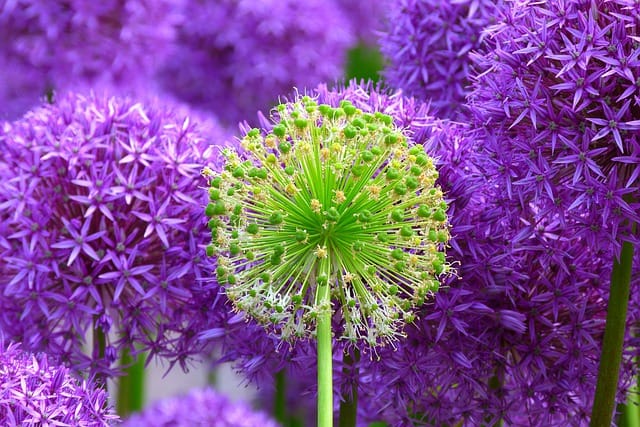
Alliums, or ornamental onions, are truly showstoppers in any garden. These dramatic flowers rise above the rest with tall, sturdy stalks topped with unique globes of tiny florets. Planting alliums alongside tulips adds height and structure to your floral arrangement, providing visual interest at different levels.
Available in shades of purple, blue, and white, alliums bloom later in the spring and into early summer, providing a seamless transition from the vivid display of tulips to their own striking blooms. Additionally, alliums are highly resilient and will thrive in well-drained soil, making them an ideal companion for tulips.
Pansy
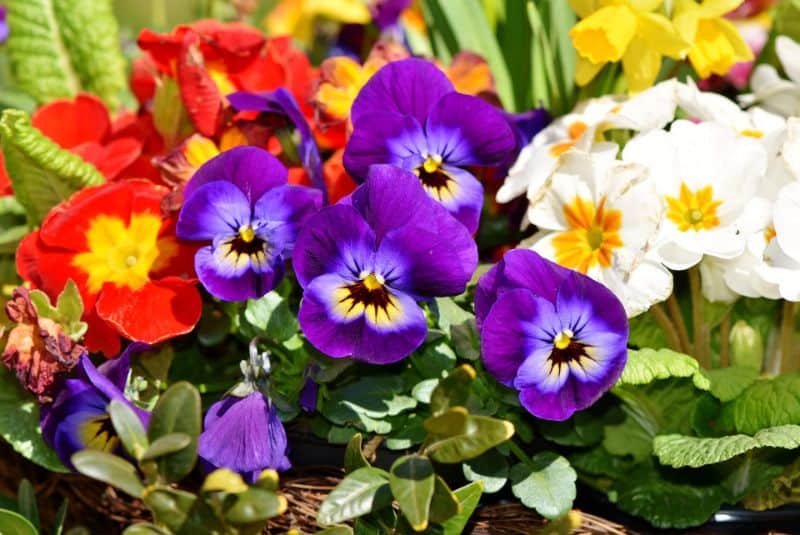
With their charming faces and vibrant colors, pansies make for exceptional companions to tulips. As cool-season flowers, pansies thrive in the cooler temperatures of spring, often blooming alongside the tulips. Their soft, rounded petals contrast beautifully with the structured form of tulips, creating an enchanting mix in any border or container.
Pansies come in a wide array of colors and patterns, allowing you to coordinate or contrast with your chosen tulip varieties. Additionally, their ability to fill in gaps as tulips grow taller over the season provides a continuous splash of color in the garden. They prefer similar growing conditions as tulips—well-drained soil and plenty of sunlight.
Snapdragon
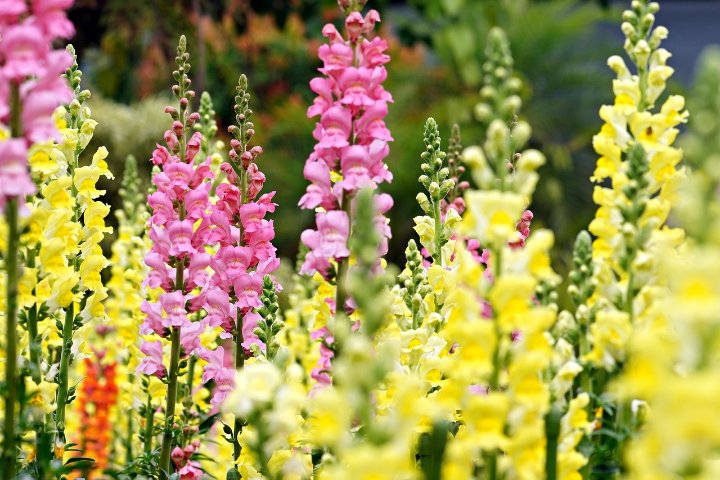
Snapdragons (Antirrhinum majus) are versatile cool-season flowers that add vertical interest near tulip plantings. Their tall spikes filled with densely packed flowers come in an array of colors, making them an excellent choice to fill the space alongside tulips. As tulips fade, snapdragons can take center stage, blooming well into the summer.
The two flowers create a beautiful transition in the garden, with tulips providing an initial burst of color followed by the lasting blooming period of snapdragons. These flowers thrive in full sun and well-drained soil and are often chosen for their ability to attract pollinators, enhancing the biodiversity of your garden.
Shasta Daisy
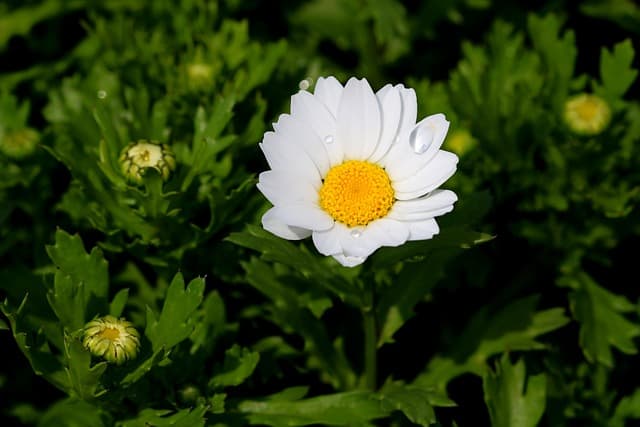
Shasta daisies (Leucanthemum × superbum) are classic perennials that bring a touch of whimsy to the garden with their bright white petals and sunny yellow centers. When planted with tulips, they create cheerful combinations that highlight the tulips’ colors beautifully. Shasta daisies bloom later than tulips, ensuring that your garden remains vibrant well into the summer months.
These daisies prefer full sun and well-drained soil, similar to tulips, making them a harmonious pairing. Their sturdy stems and carefree growth also ensure they can handle the competition from tulips without being overwhelmed.
Zinnia
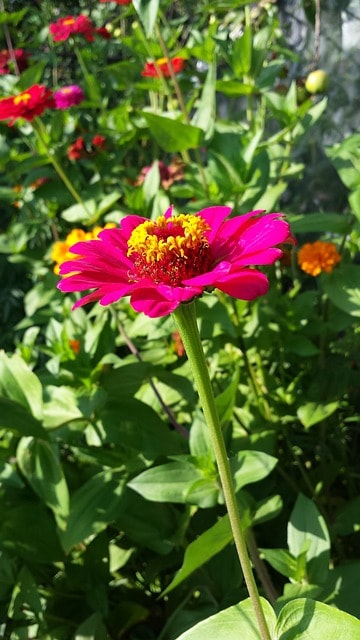
Zinnias are vibrant summer flowers that can bring a burst of color to your garden once tulips have bloomed and faded. These annuals come in various colors, allowing gardeners to plant them in alignments that either complement or contrast with their tulip displays.
Zinnias attract butterflies and other beneficial insects, which not only adds life to your garden but can also help pollinate your tuberous bulbs, promoting a healthier growing environment. They thrive in full sun and can tolerate various soil conditions, making them relatively easy to grow alongside tulips.
Daylilies
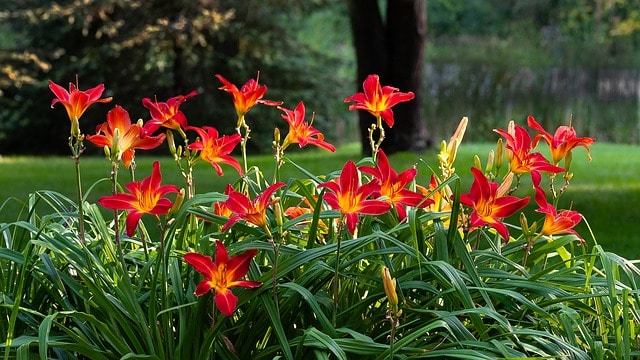
Daylilies (Hemerocallis) are hardy perennial flowers that offer a long blooming season, making them a great companion for tulips. These adaptable plants can thrive in diverse conditions and require minimal maintenance, allowing gardeners to enjoy their beauty without much fuss.
The vibrant colors and varied forms of daylilies complement tulips beautifully, and their ability to bloom after tulips have faded means that your garden will stay colorful throughout the season. Planting daylilies in the garden can create a lush tapestry of blooms that ensures visual interest in every corner.
Nasturtium
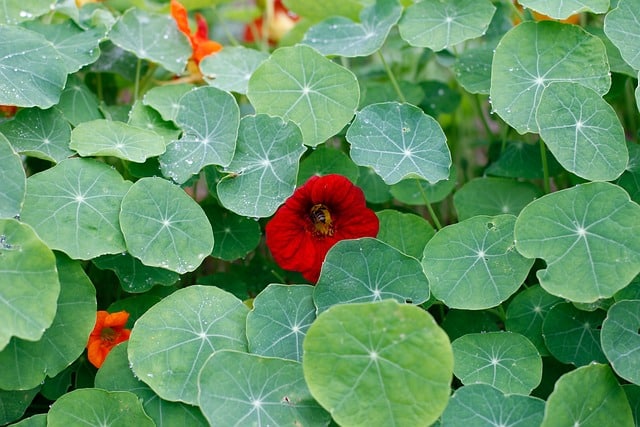
Nasturtiums are cheerful, edible flowers that add a splash of color to any garden. With their unique round leaves and striking blooms, these versatile plants provide an engaging contrast to the more upright tulip. Nasturtiums thrive in poor soil and can tolerate some shade, making them perfect companions for tulips, which prefer sunnier spots.
These flowers not only enhance the aesthetic appeal of the garden but also attract beneficial pollinators, ensuring that your tulips receive extra attention from bees and butterflies. Plus, they have the added benefit of being edible, allowing you to incorporate their peppery flavor into salads and other dishes.
Hostas

While hostas are mainly grown for their lush foliage, they can provide a beautiful backdrop to tulips during their bloom. These perennial plants come in a variety of leaf shapes and shades of green, often featuring striking variegation. Planting hostas behind or alongside your tulips ensures that as the colorful blooms fade, the garden remains vibrant and interesting.
Hostas prefer shade to partial sun and are known for thriving in moist, well-drained soil, which can help retain moisture around tulip bulbs. Their impressive foliage adds texture to the garden, creating a well-rounded landscape that highlights the beauty of tulips.
Marigold

Marigolds are a favorite among gardeners not just for their bright colors but also for their pest-repelling properties. When planted alongside tulips, marigolds can help ward off aphids and other pests that may threaten the delicate blooms. Their warm oranges and yellows harmonize beautifully with tulips’ colors, creating a striking and cheerful display.
These annuals thrive in full sun and are tolerant of various soil types, making them easy to grow alongside tulips. Their blooming period extends through summer, ensuring that your garden remains a vibrant spectacle long after the tulips have faded.
Sweet Alyssum
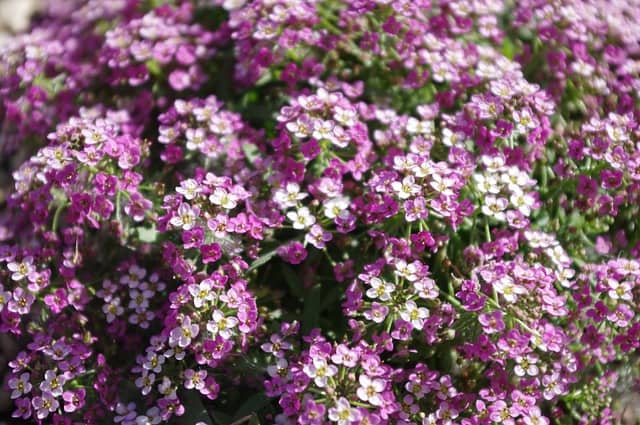
Sweet alyssum is a charming low-growing flower known for its delicate clusters of tiny blossoms and sweet fragrance. When paired with tulips, sweet alyssum can help fill out the garden bed, creating a carpet of color that contrasts nicely with the taller tulips. The fragrance of sweet alyssum can enhance the sensory experience of your garden while attracting butterflies and beneficial insects.
These hardy flowers thrive in full sun and can tolerate various soil types. They are excellent for edging and can create a beautiful flow around your tulips, adding softness to their bold shapes as they bloom.
Dianthus
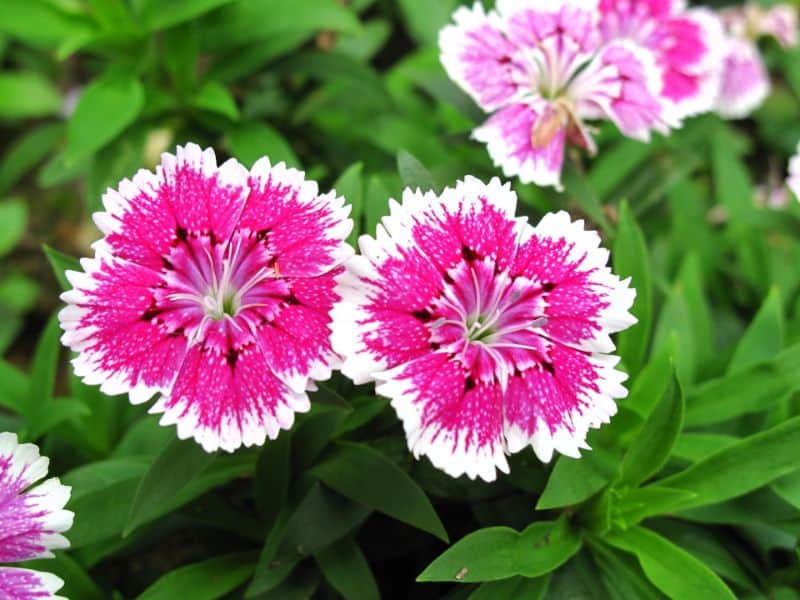
Dianthus, often referred to as pinks, includes a variety of species that boast fragrant blooms with frilled edges. Their compact growth habit and diverse color palette make them a lovely addition to a tulip bed. Planting dianthus with tulips can create a harmonious blend of textures and colors, as their delicate flowers complement the tulips beautifully.
Dianthus thrives in well-drained soil and prefers full sun, syncing well with the conditions desired by tulips. Their long blooming season extends from spring into summer, ensuring your garden is full of life for months.
Brunnera
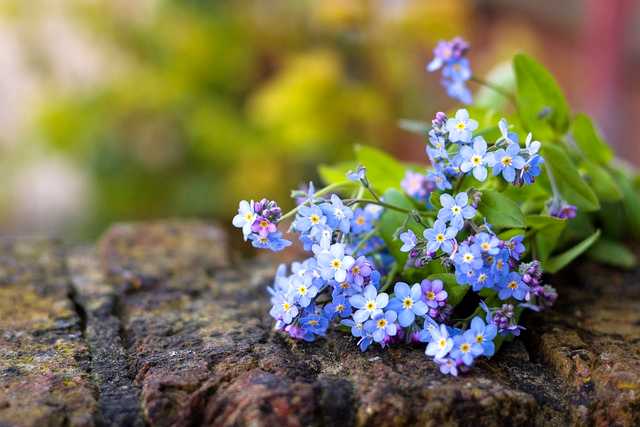
Brunnera, commonly known as Siberian forget-me-nots, are wonderful shade-loving perennials with heart-shaped leaves and beautiful blue flowers. These plants bloom later in the spring, typically when the tulips are at their peak. The small, bright blue flowers provide a lovely contrast to the bold colors of tulips.
Brunnera can thrive in partial to full shade, making them a suitable companion for tulips that may be positioned beside trees or in shaded areas. Their low growing nature allows tulips’ taller blooms to take center stage, while Brunnera offers a colorful ground cover that remains attractive throughout the season.
Virginia Bluebells
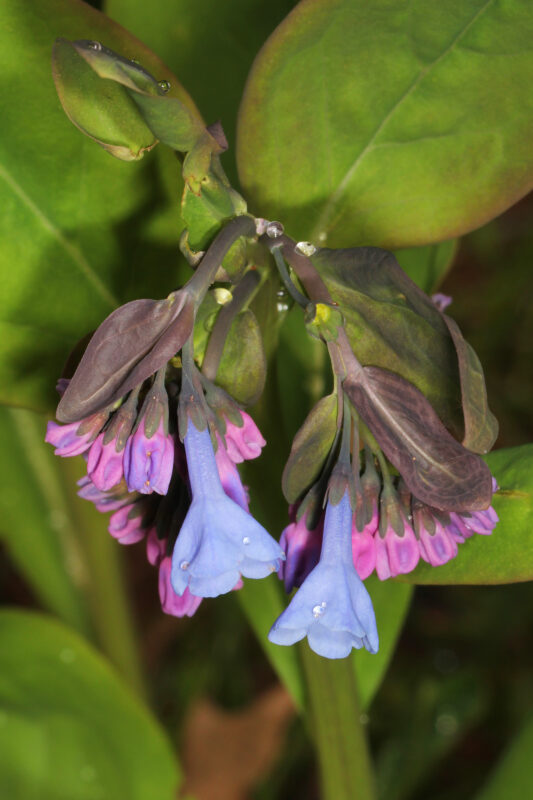
With their nodding clusters of bell-shaped flowers, Virginia bluebells (Mertensia virginica) add a touch of whimsy to any flower bed. They bloom in early spring, overlapping beautifully with tulips, and provide a soft blue hue that contrasts perfectly with the tulip palette.
These perennials prefer moist, well-drained soil and thrive in partial shade, making them an excellent choice for gardens with less sunlight. Virginia bluebells establish quickly and can naturalize over time, ensuring that your tulips will have a reliable companion year after year.
Snowdrop Anemone
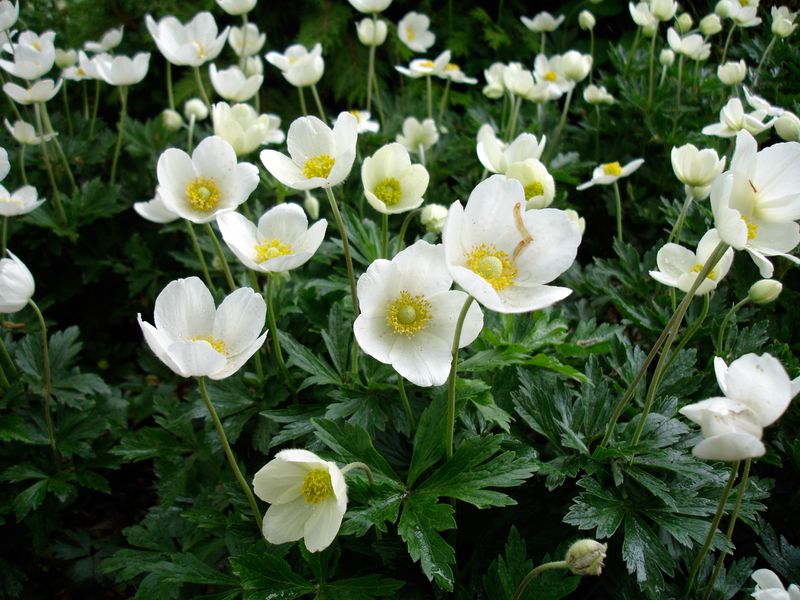
Snowdrop anemone (Anemone sylvestris) adds elegance to the spring garden with its delicate white flowers that resemble snowflakes. The blooms emerge in early spring, perfectly timed to complement tulips’ bright colors. These perennials can create a lovely white carpet beneath taller tulips, emphasizing their vibrant colors while providing a light, airy feel to the garden.
Snowdrop anemone prefers moist, well-drained soil and partial to full sun, which aligns nicely with ideal tulip conditions. Their ability to spread and fill gaps makes them a great choice for naturalistic gardening.
Creeping Phlox
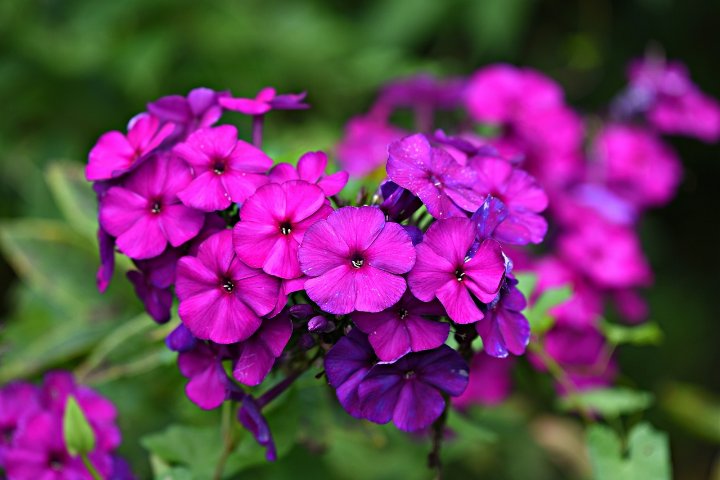
Creeping phlox (Phlox subulata) is a low-growing perennial that blossoms in a dazzling display of colors in early spring. With its mat-forming habit, creeping phlox is ideal for spilling over the edges of garden beds, making it a fantastic ground cover companion for tulips. Their vibrant blooms offer a colorful contrast against the bold form of tulips.
This hardy perennial thrives in full sun and can tolerate various soil conditions, making it easy to incorporate into your tulip display. As tulips fade, creeping phlox maintains its vibrant colors, providing continuous seasonal interest.
Hellebore
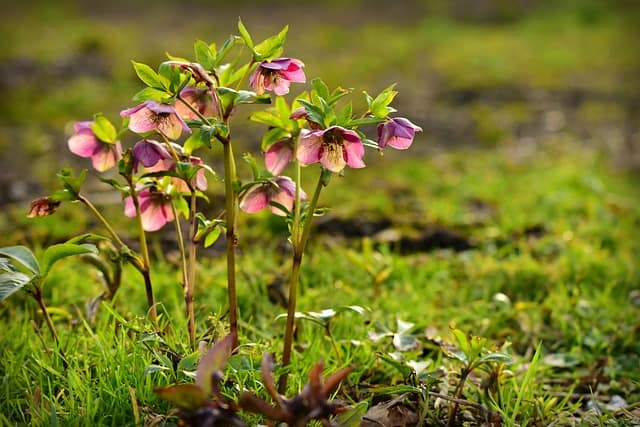
Hellebores, often known as Lenten roses, are celebrated for their ability to bloom in early spring, often when there is still snow on the ground. These hardy plants offer alluring flowers in shades of purple, pink, and white that provide striking contrast alongside tulips. Their unique, bowl-shaped blooms lend a touch of elegance to the garden.
Hellebores thrive in partial shade and prefer well-drained soil enriched with organic matter, making them an excellent companion for tulips that may also appreciate similar conditions. Their foliage remains attractive throughout the growing season, ensuring a lush backdrop for blooming tulips.
Columbine
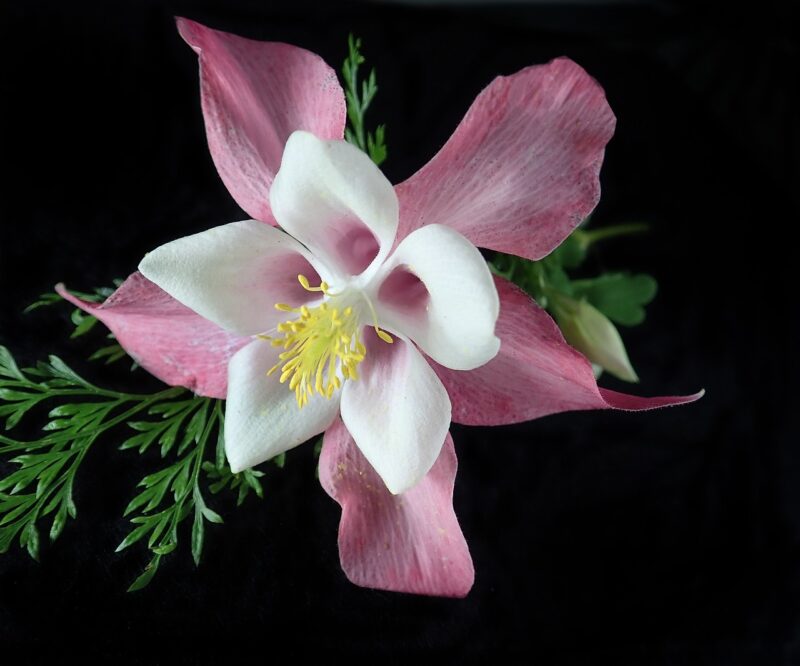
Columbine (Aquilegia) is appreciated for its delicate, spurred flowers that come in various colors and patterns. These charming perennials bloom during late spring, overlapping beautifully with tulips. The unique shape and gentle sway of columbine flowers create a beautiful contrast to the upright blooms of tulips, enriching the visual diversity of your garden.
Preferring partial shade and well-drained soil, columbine is versatile and can thrive in a range of conditions. This versatility allows gardeners to design creative arrangements that allow both tulips and columbine to shine.
Veronica
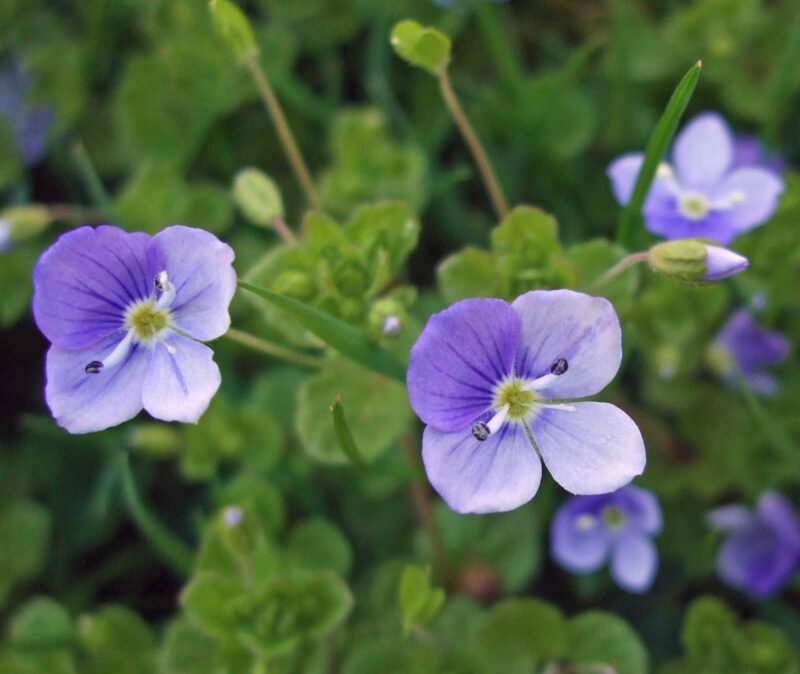
Veronica, known commonly as speedwell, offers blue to purple spires that add vertical interest to your flower bed. These perennials blossom in late spring and early summer, creating a seamless transition alongside tulips. The vivid colors and floriferous nature of Veronica provide a stunning backdrop that harmonizes with the varied colors of tulips.
Veronica prefers well-drained soil and full to partial sun. As the tulips fade, Veronica will continue to bloom, ensuring your garden remains lively and vibrant throughout the growing season.


